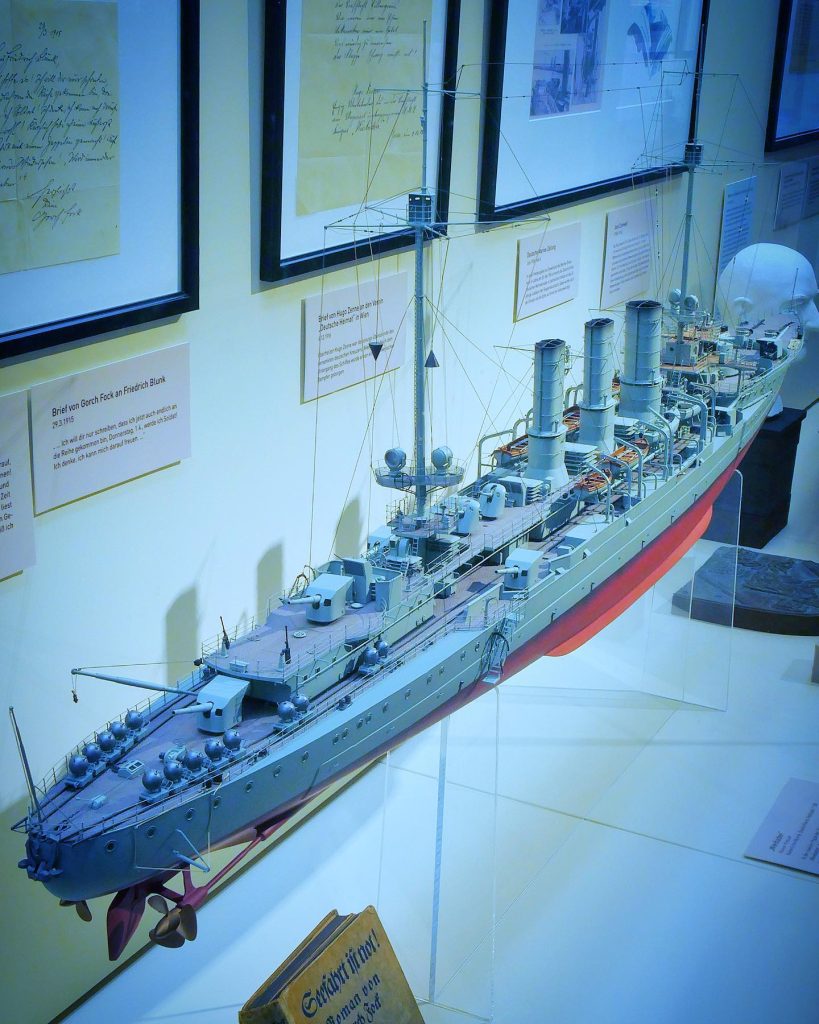
The light cruiser SMS Wiesbaden (1915-1916). This magnificent 1:100 scale model of the Wiesbaden is one of the masterpieces built by Helmut Schmid that is on display in our museum. It is on deck 5 in our exhibition on the Battle of Jutland.
The light cruiser of the Imperial German Navy SMS „Wiesbaden“ of the Imperial German Navy had a short and dramatic life. It was laid down in 1913 at the Vulcan AG shipyard in Stettin (today’s Szczecin, Poland) and commissioned in August 1915. This was less than a month after her completion. The very short trial period was of course because the First World War was raging, and the German High Seas Fleet needed new ships. Despite the short trial period, neither the „Wiesbaden“ nor her sister, the „Frankfurt“, had any technical problems. This class of light cruiser represented an improvement over the previous Graudenz-class ships.
The „Wiesbaden“ was only used once: in the Battle of Jutland between 31 May and 1 June 1916, which was the most violent clash of the British Grand Fleet and the German High Seas Fleet of the entire war. It claimed 8.645 lives and the loss of ships with a total tonnage of almost 180.000 tons. Nevertheless, the battle did not change the status quo of the war.
In the early evening of 31 May, the SMS „Wiesbaden“ was hit in the engine room by a shot from the battle cruiser HMS „Invincible“. The ship was subsequently unable to maneuver and repeatedly came under fire. German ships made several attempts to rescue the crew but failed under British fire. The „Wiesbaden“ sank in the early hours of 1 June. The Norwegian steamer „Willi“ rescued the stoker Hugo Zenne from distress two days later. He was the only survivor of the ship’s previously 590-man crew. The most famous casualty of the „Wiesbaden“ was the writer Johann Kinau, who had published under the pen name „Gorch Fock“. Kinau had originally been drafted into the army but decided to join the navy voluntarily because of his deep attachment to the sea. In his honor, the sail training ships of the German navy were christened „Gorch Fock“. The wreck of the „Wiesbaden“ was discovered in 1983 by a diving expedition of the Navy of the Federal Republic of Germany.
